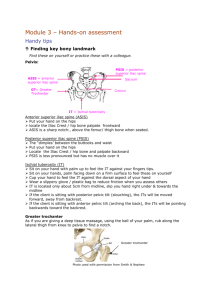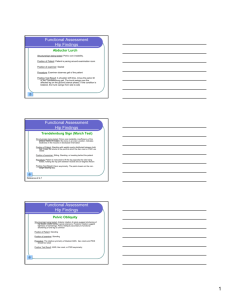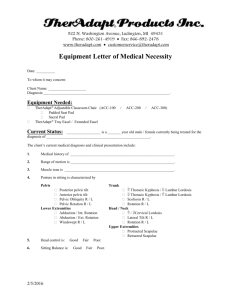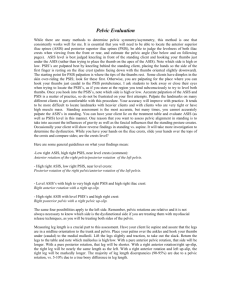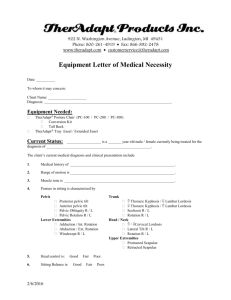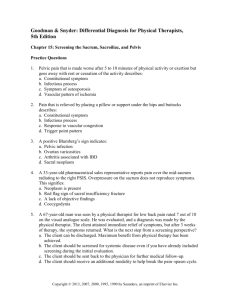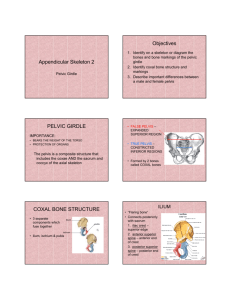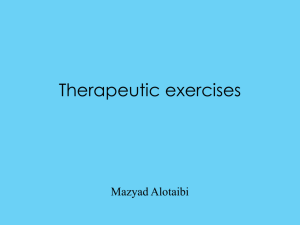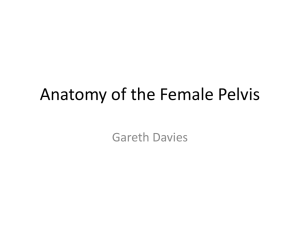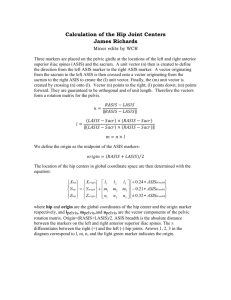here
advertisement
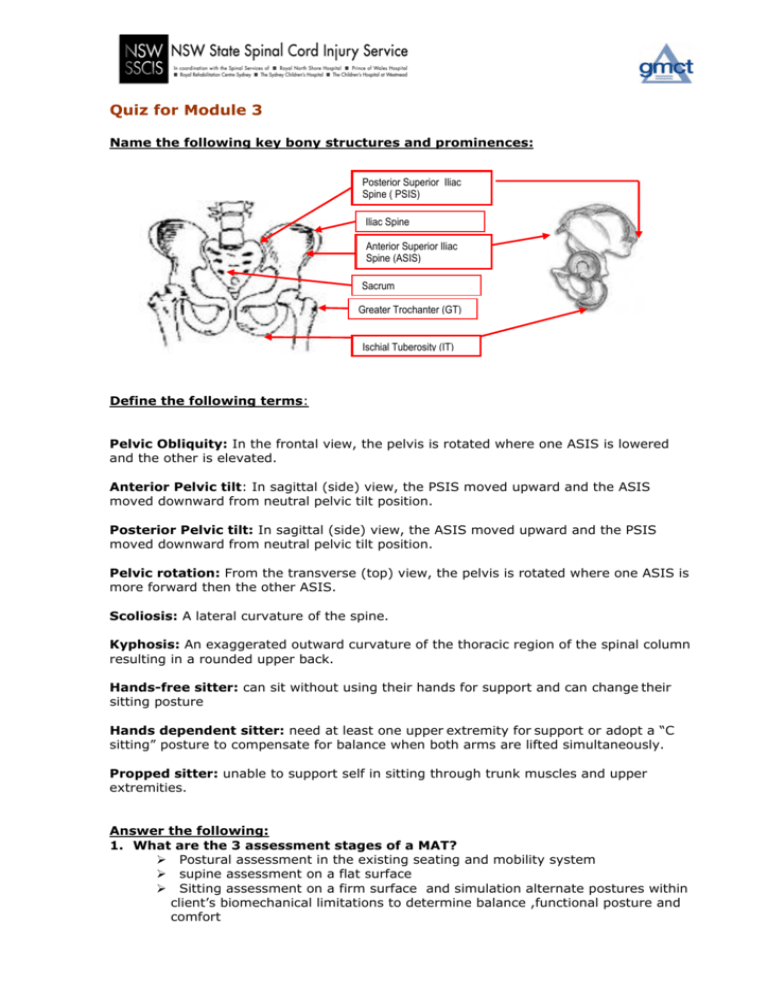
Quiz for Module 3 Name the following key bony structures and prominences: Posterior Superior Iliac Spine ( PSIS) Iliac Spine Anterior Superior Iliac Spine (ASIS) Sacrum Greater Trochanter (GT) Ischial Tuberosity (IT) Define the following terms: Pelvic Obliquity: In the frontal view, the pelvis is rotated where one ASIS is lowered and the other is elevated. Anterior Pelvic tilt: In sagittal (side) view, the PSIS moved upward and the ASIS moved downward from neutral pelvic tilt position. Posterior Pelvic tilt: In sagittal (side) view, the ASIS moved upward and the PSIS moved downward from neutral pelvic tilt position. Pelvic rotation: From the transverse (top) view, the pelvis is rotated where one ASIS is more forward then the other ASIS. Scoliosis: A lateral curvature of the spine. Kyphosis: An exaggerated outward curvature of the thoracic region of the spinal column resulting in a rounded upper back. Hands-free sitter: can sit without using their hands for support and can change their sitting posture Hands dependent sitter: need at least one upper extremity for support or adopt a “C sitting” posture to compensate for balance when both arms are lifted simultaneously. Propped sitter: unable to support self in sitting through trunk muscles and upper extremities. Answer the following: 1. What are the 3 assessment stages of a MAT? ¾ Postural assessment in the existing seating and mobility system ¾ supine assessment on a flat surface ¾ Sitting assessment on a firm surface and simulation alternate postures within client’s biomechanical limitations to determine balance ,functional posture and comfort 2. What should be included in recording a MAT? ¾ Postural presentations ¾ Range of motions or angles ¾ Joint flexibility An assessment form should be used to record the 3 stages of MAT in a systematic order. 3. How might shortened hamstring muscles affect a person’s posture? ¾ Reduce thigh to lower leg angle /or/ ¾ pull pelvis into posterior pelvis tilt and open thigh to trunk angle 4. What is the purpose of skin check and when it should be carry out? ¾ ¾ ¾ To assess location and shape of the scare /wound. To check if there are other scars/ skin marks. (Other possible sites / causes of skin break down.) To see if the scar / wound correlate with the suspected bony prominence.
